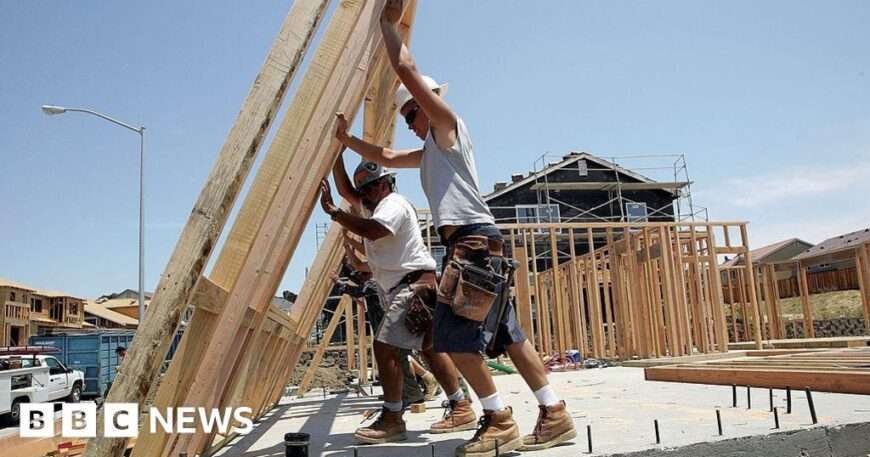In a world where technology constantly reshapes industries, construction has surprisingly remained much the same. Transporting a 1920s worker to a present-day building site would reveal striking similarities in methods. According to Sam O’Gorman from McKinsey, “Overall, across Europe and the US, stuff is still built in a pretty manual fashion – not very different to the way it would have been built 100 years ago.”
New technologies were expected to revolutionise homebuilding. Yet, the sector predominantly relies on manual labour. In 2017, McKinsey projected a massive potential productivity boost, but the industry remains a digital laggard. Modern tools and software have made only incremental efficiency gains, leaving the core practices largely untouched.
Stagnation in Construction Techniques
Transporting a construction worker from the 1920s to a modern-day site would reveal few changes in methods. According to Sam O’Gorman, an associate partner at McKinsey, “Overall, across Europe and the US, stuff is still built in a pretty manual fashion – not very different to the way it would have been built 100 years ago.” In essence, advancements in construction haven’t matched those in other sectors.
In 2017, a study by McKinsey Global Institute suggested a potential 50 to 60% boost in productivity for the industry. Despite that, modern tools and software have only marginally increased efficiency. Construction remains a digital laggard, says O’Gorman, with slow adoption of the latest digital technologies compared to other fields.
3D Printing: Promises and Pitfalls
One of the highly anticipated technologies is 3D printing, which builds walls layer-by-layer using concrete or other materials. The University of Maine has pushed the envelope by creating the world’s largest 3D printer. This innovation has led to the construction of BioHome3D, a 600 sq ft house made from wood fibres and plant-based resin. Dr Habib Dagher, who leads the project, notes the house has weathered two Maine winters successfully.
Still, practical application of 3D printing in homebuilding is limited. Such homes are typically costly, feature thick walls, and require flat, open sites for construction. Therefore, while the technology is impressive, it remains largely experimental. Despite noteworthy 3D-printed projects, the actual number of houses built this way remains insignificant.
Modular Construction: Efficiency and Hurdles
Modular construction involves creating building components in a factory, then assembling them on-site. This method promises higher quality due to factory-controlled conditions, eliminating many on-site errors, says Dr Dagher.
Neil Jefferson, from the UK Home Builders Federation, highlights the challenges. Planning policy delays can disrupt construction schedules, making the method less attractive to private developers. “The problem with manufacturing housing is that you book your stuff in the factory to build those homes, and the materials arrive and you need to stick to the plan,” he says.
Although modular construction offers better quality and efficiency, its adoption is hindered by inflexible planning policies and market uncertainties. Developers need assurance they can sell homes quickly and adjust plans as needed. For local authorities or housing associations, these challenges are less pronounced, making modular methods more feasible.
Rise of Automated Architecture
Bristol-based Automated Architecture (AUAR) aims to revolutionise the industry with micro-factories using robots to build timber houses. These micro-factories can create buildings of up to six storeys, either on-site or within the factory. Mollie Claypool, AUAR co-founder, suggests this model allows for the production of innovative homes without the high costs associated with traditional modular housing.
Unlike larger modular companies, AUAR’s partners can set up with an initial cost of around £250,000 and an ongoing fee. This approach slashes labour costs by 20% to 60% and speeds up build times, reducing both risk and waste, says Claypool. As a result, higher profit margins and faster project completions become achievable.
With four customers already onboard, AUAR aims to expand its footprint significantly by 2030. The company plans to produce more than 30,000 energy-efficient homes annually, offering a potential pathway to more affordable, sustainable housing solutions.
Digitisation Behind the Scenes
Although the homebuilding process hasn’t seen a dramatic transformation, smaller aspects have started to digitise. O’Gorman points out that while the physical act of construction remains largely unchanged, the broader chain is modernising. Digital tools now help in identifying land, predicting future values, and improving design processes.
According to Karoliina Torttila from Trimble, digitisation helps streamline many administrative tasks in construction. Quantity surveying, health and safety protocols, and even carbon management can now be efficiently handled through apps and software, minimising paperwork and manual tracking.
While these back-office improvements contribute significantly, greater challenges remain. The fragmented nature of the industry complicates uniform tech adoption. Each speciality—mechanical, electrical, plumbing—requires tailored solutions, making comprehensive digital transformation a complex task.
3D Modelling in Big Projects
One promising solution involves creating 3D models of buildings and components to spot discrepancies early. This approach enhances communication between teams and aids in planning and purchasing decisions. Torttila explains that such actionable data helps in anticipating and resolving issues before they escalate.
Implementing 3D modelling can streamline processes, but the fragmented industry still poses a challenge. With multiple contractors and teams working simultaneously, coordination remains key to successful integration of new technologies.
Conclusion
In conclusion, while technological advancements have introduced promising methods like 3D printing and modular construction, their practical applications remain limited. Digitisation has improved many behind-the-scenes processes, but significant challenges hinder wide-scale adoption. The construction industry needs to overcome these hurdles to fully embrace and benefit from modern technology.
In conclusion, while technological advancements like 3D printing and modular construction hold promise, their practical usage in the construction industry is still in its infancy. Digitisation has enhanced many background processes, yet major obstacles limit full adoption. The construction sector needs to overcome these challenges to embrace and gain from modern technologies fully.

